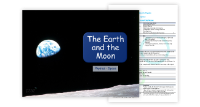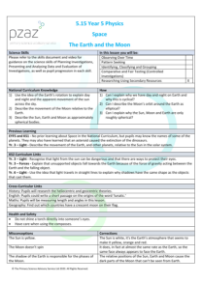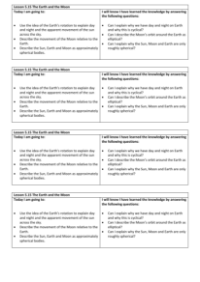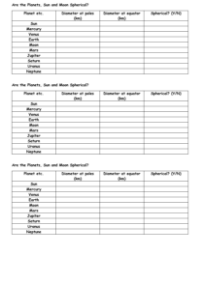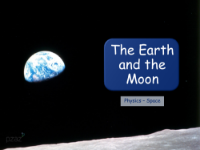The Earth and the Moon - Self Assessment
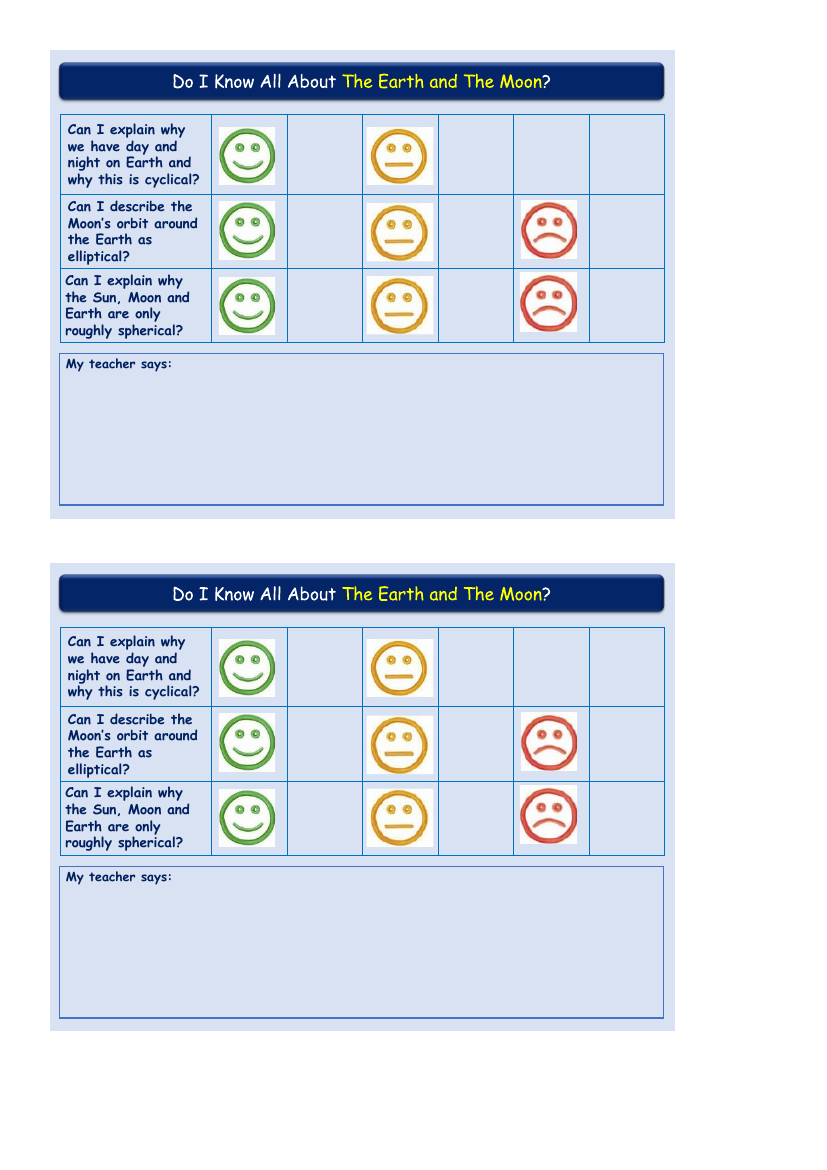
Science Resource Description
The document appears to be a template for a self-assessment exercise, where students are prompted to reflect on their understanding of certain astronomical concepts. It asks whether they can explain why day and night occur on Earth and why this pattern is cyclical, indicating an understanding of the Earth's rotation on its axis and the consistent alternation between daylight and darkness that results from this rotation. The assessment also probes students' knowledge of the Moon's orbit, questioning if they can describe it as elliptical, which suggests they should understand that the Moon's path around the Earth is not a perfect circle but an elongated loop, or ellipse.
Additionally, the self-assessment asks students to consider if they can explain why the Sun, Moon, and Earth are only roughly spherical. This part of the assessment is designed to evaluate whether students comprehend that while these celestial bodies are not perfect spheres, they are rounded due to the force of gravity pulling matter towards their centers, yet they have irregularities that make them slightly oblate or imperfect in shape. The repetition of these questions, followed by a section for the teacher's comments, indicates that this is a structured reflection meant to be filled out by both students and educators to track understanding and progress.

